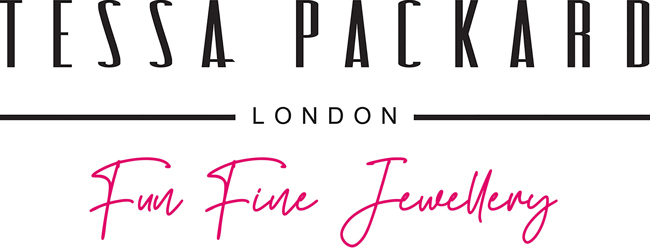
March 2021
Hugo Boys
Hugo Boys is the founder of Bosco London, a dynamic lighting and furniture company based in Wiltshire. Started in 2015, it began life in a tiny shed and has since grown to service some of the highest and most respected interior designers in the world, as well as private clients.
Bosco London’s signature style is all about using natural products, such as water buffalo and kudu horn, to create unique and striking designs. Alongside furniture making, sustainability and conservation are two of Hugo’s great passions, both of which strongly influence the decisions he makes when choosing his materials. All his animal products are ‘waste’ by-products of the meat industry or conservation projects, making his designs both beautiful and sustainable in every way.
Tessa Packard [TP]: You left the world of corporate insurance to become a craftsman. Talk us through why you decided on a change of career and why you started with lighting.
Hugo Boys [HB]: Corporate life definitely wasn’t for me. The thought of spending the rest of my working life travelling to and fro on the tube to a job I did not enjoy was very depressing. I had always wanted to work for myself but doing what exactly I didn’t know.I had never considered myself a creative person, I always just enjoyed tinkering in my parents garden shed and making pieces using natural materials. This started with walking sticks and shepherds crooks as presents for friends, before experimenting with lighting and launching BOSCO. Lighting is a huge market and one where people are prepared to spend, particularly for a design that is original and of real quality.
It is often said that you should do something you love and then it doesn’t feel like a job. I’m lucky to be in that position now that BOSCO is up and running.
[TP]: Your work has now expanded to include furniture, handles and other home accessories. Where do you see Bosco London in ten years time? And again in twenty?
[HB]: I would love BOSCO to become the benchmark for what is acceptable in terms of using natural material in design as well as an educational platform for how and what to use sustainably.
Evolving. I’d like us to have diversified into other areas of design as well as have community based projects around the world.
[TP]: To date, your work uses buffalo, springbok, blesbuck, kudu and gemsbok horn. Why are you so drawn to using natural materials? And what other natural by-products would you like to experiment with or incorporate into your pieces?
[HB]: I feel that so many designs are inspired by nature and natural materials so why not use them, provided of course they are being sourced in a responsible and sustainable way. I first started experimenting with African horn after a holiday in Mozambique. We source our African antelope horn from South Africa where the horns are a by-product of professionally managed game. Our Water Buffalo horn is from Asia and, whilst it has plenty of challenges, it is a far more versatile horn with greater scope for use in the design of our products.
Silverlining, a top UK furniture maker, utilised some reindeer hide which was recovered from a 232 year old sunken vessel preserved in oak. They brought the hide back to life and when finished, it was inlayed onto a beautiful desk which of course looked incredible. This sort of thing would be amazing, so if you know of any sunken treasure let me know!!
[TP]: You are passionate about sustainability and the ethical sourcing of animal products. What is your greatest challenge in this arena, and in turn, what more would you like to do to push the agenda of sustainability forward?
[HB]: Most of what we currently use is water buffalo horn which is a by-product of the meat and dairy industry in India. All of these animals are domesticated and there are millions of them. At the moment sourcing the material we work with is not in itself too difficult (apart from the long lead times) but a growing misunderstanding about using natural material means that there could be difficulties in the future.
Education is key to everything when it comes to conservation and sustainability and as part of that, encouraging transparency as well as a balanced discussion. We plan to continue playing our part in helping people truly understand what genuine sustainability is in practice. It is a word widely used by companies in an effort to establish their corporate credentials. Some organisations claim to be “listening” and “sustainable” but in many cases this is often exaggerated in order to placate and impress investors, customers, and the media. In reality it will always be difficult to live in a world that is 100% sustainable but we must always strive to achieve this position.
[TP]: How has what you do changed who you are?
[HB]: I truly love what I do and I have learnt more in the last five years than at any stage in my life so far, be that understanding the complexities in the making and engineering process, sourcing sustainable materials and managing and running a business. I have had to be patient and learn to build my company in controlled stages as well as prepared to take risks by investing in the future while always concentrating on original, top quality products and client service. Controlling cashflow is critical and I have become pretty good at that over the last year or two mainly because I have had to! Above all I am far happier working for myself which I have found to be more challenging and rewarding despite the inevitable challenges and occasional setbacks.
[TP]: If you could wave a magic wand and change three things in the world what would they be?
[HB]: Remove the world of plastic; implement a huge regrowth plan for all rainforests; leave the ocean for one year untouched and let fish stocks replenish.
[TP]: In one sentence, how would you sum up the landscape of homeware / furniture design in Britain today?
[HB]: I see this as an ever-evolving landscape of multitalented individuals and teams who are continuously producing original designs and exquisite pieces, often challenging the parameters of design. I genuinely believe we have some of the best designers and makers in the world here in the UK and I am lucky enough to employ and work in collaboration with a number of them. (Sorry, that was two!)
[TP]: What designers from the past do you most admire? And by the same token, which living furniture maker do you most respect?
[HB]: Chippendale – Interestingly, he was the first person to produce marketing materials showcasing his high-end pieces.
Silverlining – who make one-off exceptional pieces of furniture but you need to have seriously deep pockets to walk through their door!
[TP]: What does good design mean to you?
[HB]: I’m not sure there is such a thing as good and bad design? It’s all subjective and I believe anyone can design. Yes of course there’s a spectrum of creativity but fundamentally we are all more creative then we realise. As long as a piece of furniture, a painting, a beautiful ring or object makes its owner happy or fits in a space, that’s surely all that matters!
[TP]: When designing a new product, what three things are non-negotiable? For example, must a piece sit in a certain price range or use a certain wood?
[HB]: Each piece must incorporate a natural material. We must never say it cannot be done. Always be open to new ideas and techniques and be prepared to push the boundaries of design and in manufacturing techniques. There must be a sensible margin, we are a business after all.
[TP]: If money was no object, describe what piece or collection you would most like to would you design and create?
[HB]: I’d love to design a large dining room table with a full set of bespoke chairs.
The table would have a classic focus with a modern twist. I would want to use beautiful burr with horn veneers on the top, and horn lipping on the edge. There would probably be some inlayed metal in there too somewhere but I have not decided where!!
Every chair would be unique (which would be a pain given you generally have to make a chair three times to get it right!). The chairs would all be different, combining timber, horn, leather and horse hair fabrics, not all together but to work collectively to look like a set. I have not drawn this up so it’s still a bit of a mismatch of ideas…!!
[TP]: What is your most current, pressing challenge in your business? And what do you find easy with what you do?
[HB]: Some might think you have to be mad to set a up a manufacturing business in the UK these days.The set-up costs are pretty high and it takes time for everything to run smoothly, plus there is always a tempting new piece of machinery to streamline the making and manufacturing process. So it’s a balance between investing in the future and at the same time, as a young company, managing cash flow carefully. Achieving a steady upwards increase in business is always a challenge.
I’m not sure I find anything easy!
[TP]: How has COVID affected your business (if at all), and what do you hope to achieve by the end of this year?
[HB]: Along with plenty of other small businesses 2020 was a frustrating year for us. COVID certainly has had an effect but we have been able to take advantage of the various government support packages that have been on offer so I am confident that we will come through the pandemic stronger and even more ambitious for the future of BOSCO. 2021 is already showing signs of being a much better year.
[TP]: If you could be introduced to anyone in the world (with a view to them furthering your business) who would that be and why?
[HB]: Yvon Chouinard who set up Patagonia. He is living proof that you can run a hugely successful company whilst being totally focused on the planet and sustainability in manufacturing.
Perversely, Patagonia actively discourages its clients from buying new garments: he says, “Do you really need a new jacket or do you just want one?”. It sounds crazy but the brand is that powerful and it’s following so huge. Yvon Chouinard has been passionate about the environment all his life and his company has always reflected this by making superb products, looking after his staff and by being ahead of the game in terms of sustainable manufacturing. The fact that he shares my love of fishing simply makes him even more of a hero in my eyes!
His book ”Let My People Go Surfing” encapsulates everything that all companies, large and small, should aspire to.
[TP]: If we asked Marc, your Head of Workshop, to describe you in three words, what would he say?
[HB]: Enthusiastic. Obsessive. Loquacious
(And hopefully he might mention that I am a fantastic employer!!!!)
[TP]: As soon as the pandemic is over you will……?
[HB]: Take my wife and son on holiday!
ON THE SPOT
Town or Countryside? Countryside
Favourite city? Mexico City
Your perfect dinner guest, dead or alive? Tom Hanks – such a legend
If you could learn a new skill? Playing the piano
The best meal you’ve ever eaten is? Giritli, Instanbul
The one essential you can’t leave home without? My dog!
Pet hate? Bad manners
Biggest extravagance? My vintage Land Rover (really not expensive!)
Favourite book? Kane and Abel by Jeffrey Archer
What would your gravestone read? An over-excitable child who loved his family, his dogs and the countryside. Happiest when all these come together at the same time.

